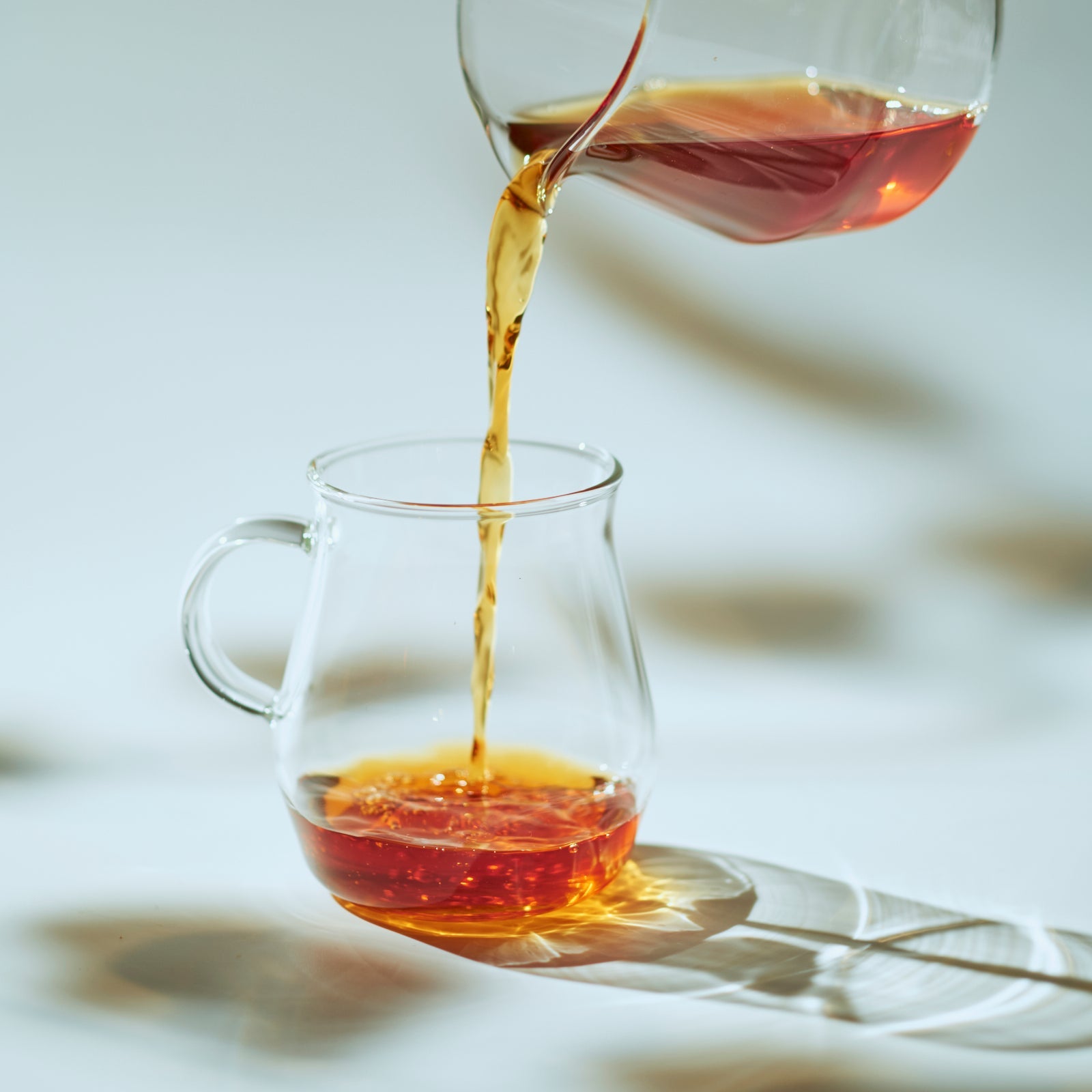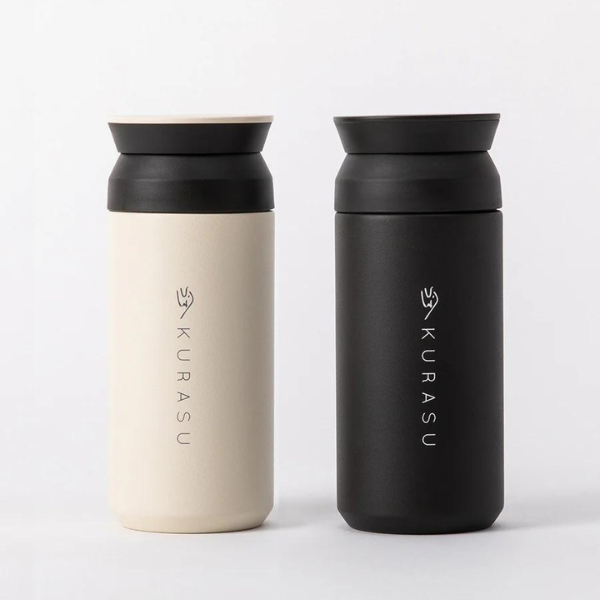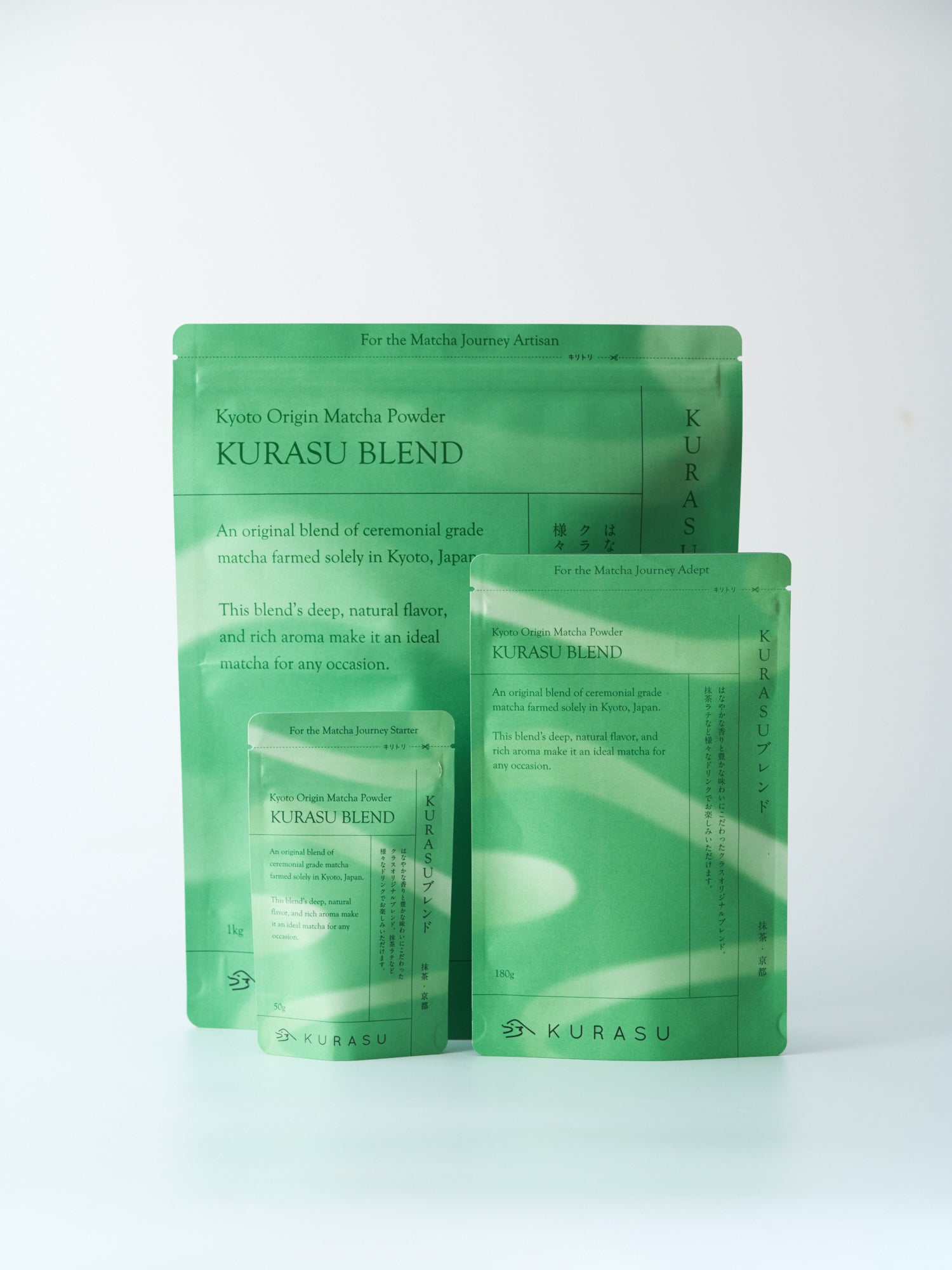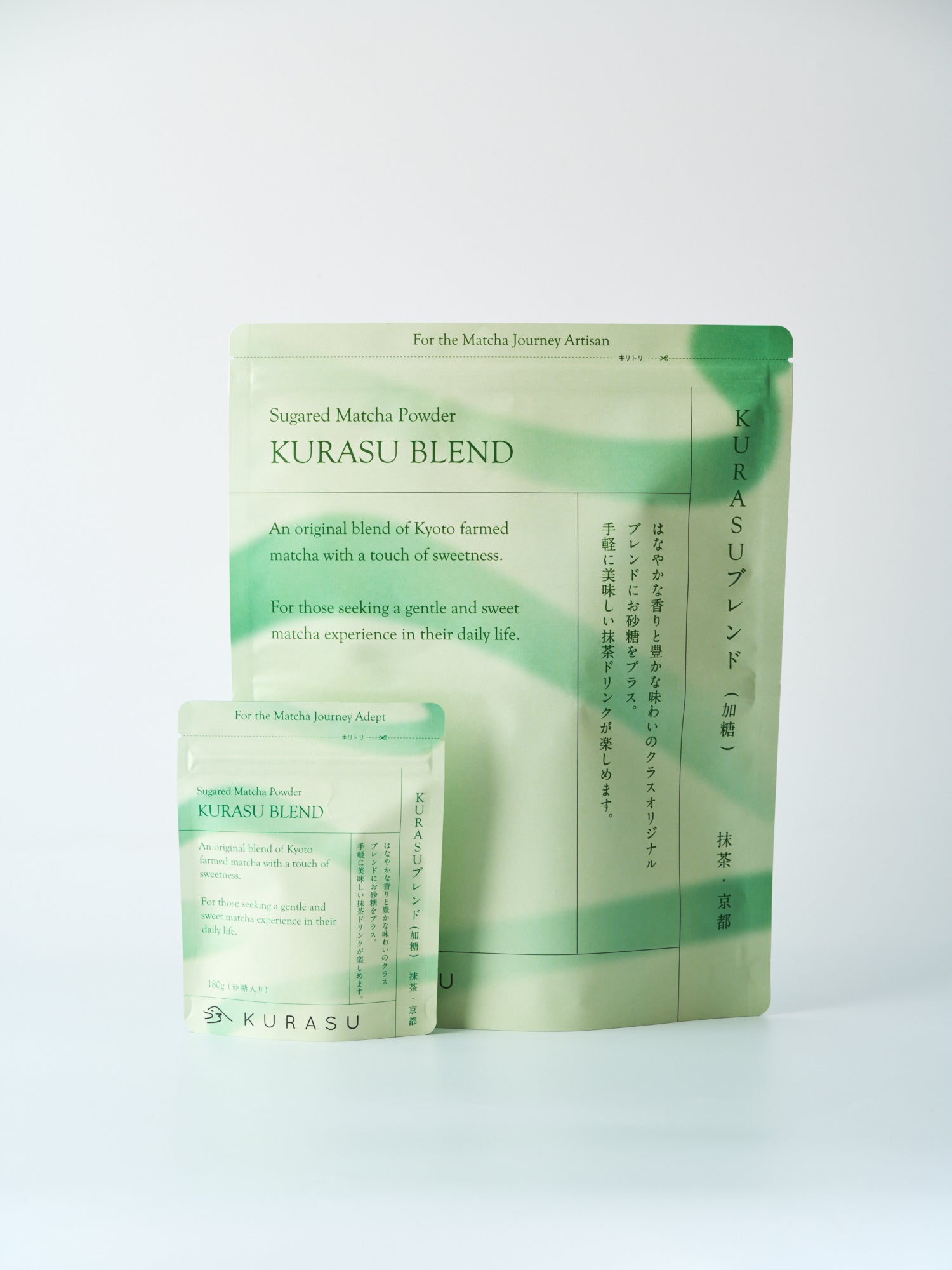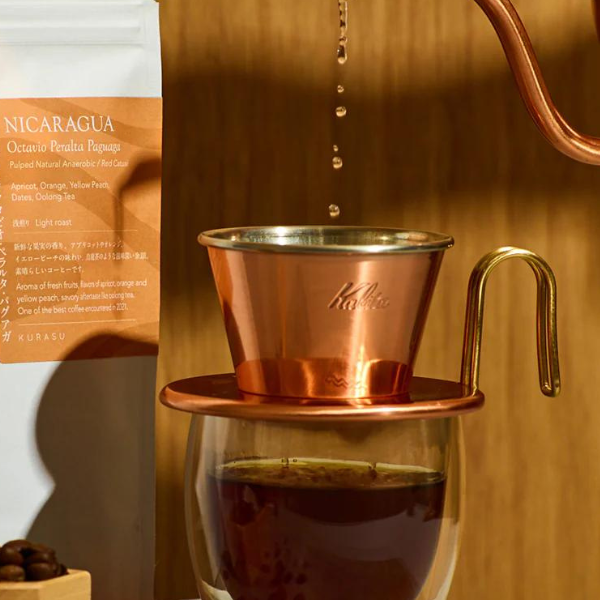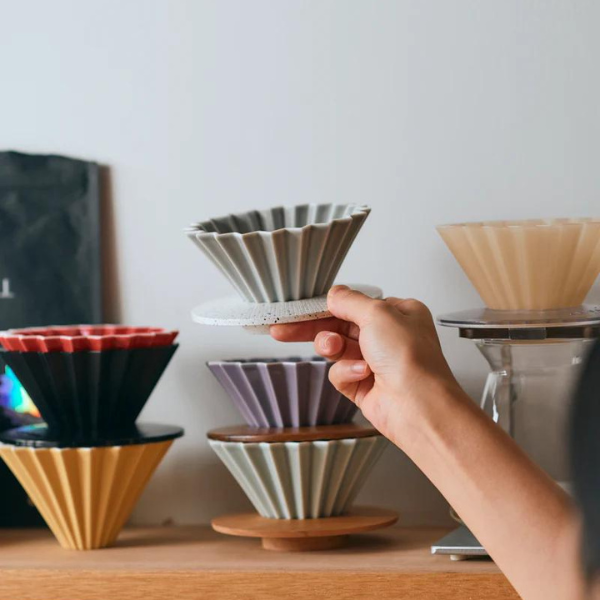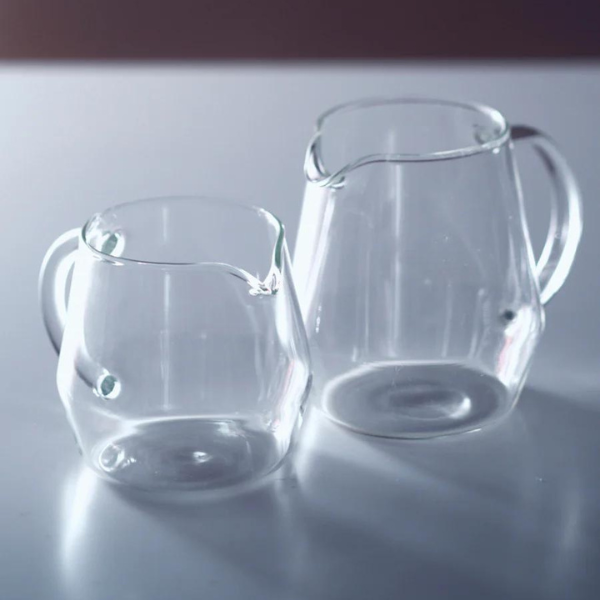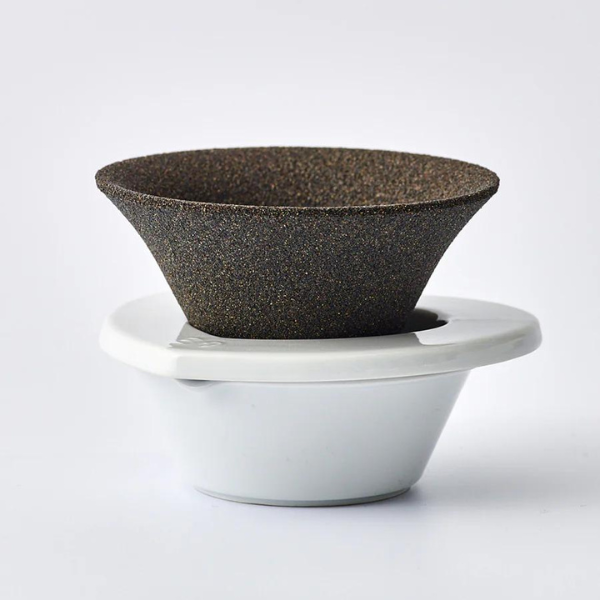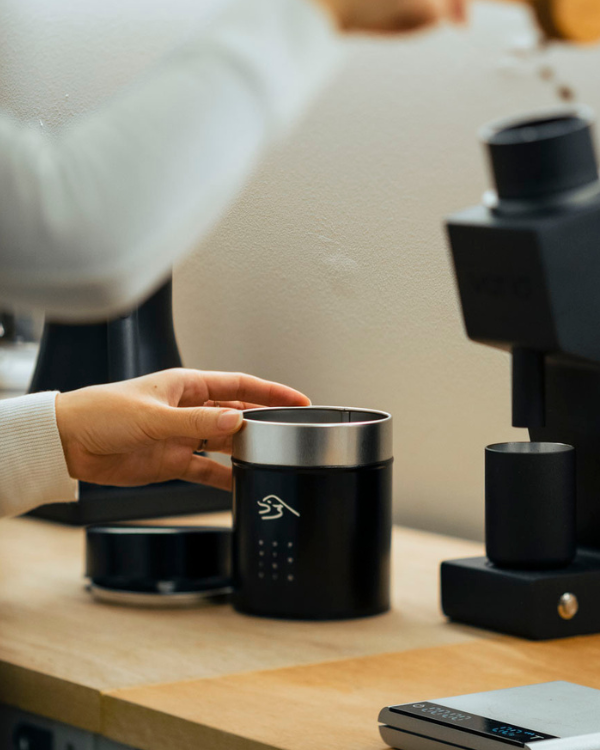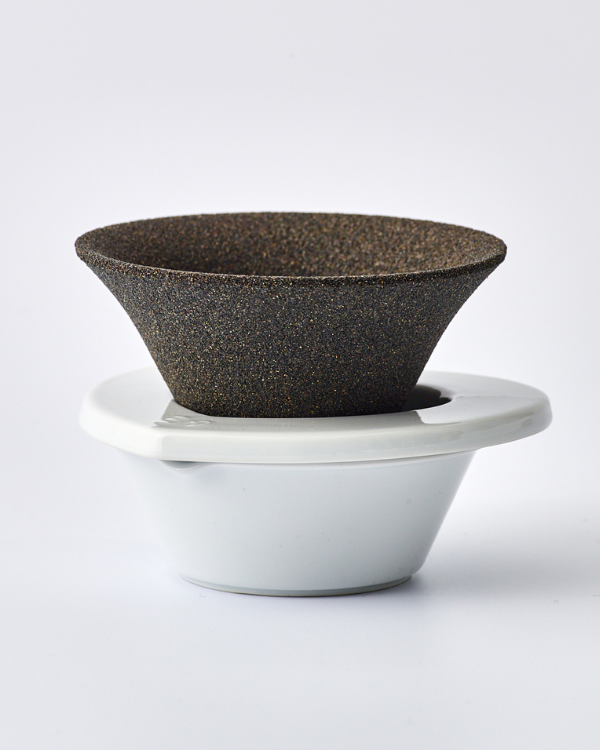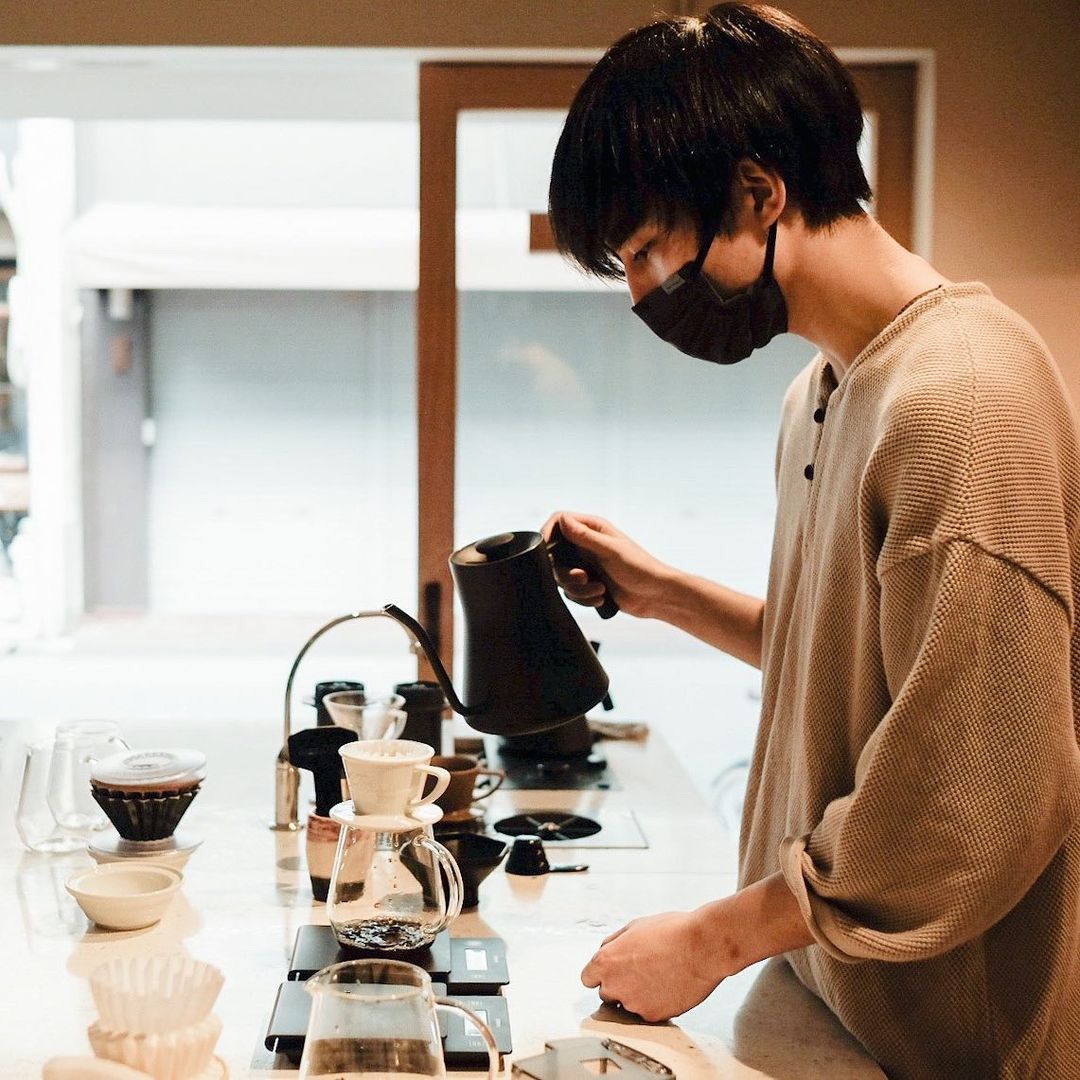Hi, this is Tsubasa and as a Kurasu's barista who loves flatbed drippers the most, I will talk about why I love them so much. (If you are one of the flatbed dripper lovers, do let us know and share your favorite drippers and recipes!)
Today, I will talk about one of my best favorite, Kalita Wave Hasami Drippers. I have shared this also on our Instagram channel (Japanese), so I apologize if you've already read it, but here you go!
The most significant features of Kalita Wave drippers are that they have flat bottoms, and have 3 little dripping holes. This design helps the steady water flow- the structure itself controls the dripping for you almost regardless of how slow/fast you pour, resulting in similar brewing time and stable, repeatable results.
Kalita Wave also adjust the total brewing time regardless of grind size- either with finer grind or coarser grind, brewing time will be maintained by this magical shape! ⠀
Another good thing about this flatbed dripper is that you can pour and distribute the hot water evenly over the coffee grind. With cone-shaped one or trapezoid-shape drippers, the thickness of the layer of coffee can vary and it requires a high level of pour control to be able to distribute the water evenly. ⠀ ⠀
However with Kalita Wave, the flat bottom keeps the layer's thickness even, and thinner in general compared to that of drippers such as V60.
So this is the general idea about why Kalita Wave Drippers are great. The next question is, how can the material make a difference? It's a question I was asking myself, and the most discussed point when people talk about material is heat retention and thermal conductivity. While it's a very important and interesting point, it isn't specific to Kalita Wave, so I will tell you a bit about how I see the difference between each Kalita Wave Drippers.
As you may know already, Kalita Wave has a several different models, and aside from their regular models they are producing special models made in collaboration with Japanese traditional crafts, such as HASAMI and TSUBAME.⠀
By learning their background stories, the craftsmanship and by actually using their different models, I feel there is a lot more than "they just use different materials"- I find it intriguing that each of the design, shape and material were chosen as a necessity coming from what each craft essentially is. It's a bit difficult to articulate, but I love how I can see in this simple tool how and why that craft led its history and ended up what they are now. The beauty and sophistication of practicality and necessity proven by time, probably. Now, I wasn't planning to talk this deep this much...
Long story short, I feel that by choosing different Kalita Wave models you can get a little different results, and there is more than the simple difference in material. HASAMI Porcelain is a great one to extract sweetness, and HASAMI Sagangives me a clean cup.
Well, it's getting rather lengthy, so let's finish with my favorite recipe!
- My favorite recipe - ⠀
Coffee: 13.0g / Medium-fine grind⠀
Hot water: 90~91°C⠀ ⠀
0s : ~40g⠀
40s : ~100g⠀
70s : ~150g⠀ 100s : ~200g⠀
⠀
My tip is to rinse the paper filter with hot water after setting it on the dripper.⠀
⠀ ⠀
If you have a larger sized dripper such as #185, I recommend you adjusting the grind level to a little finer, and raise the water temperature a little too. When you brew medium to dark roast, try adding 1.5~3g of coffee to the recipe above.
I hope this article will intrigue more people to know more about the fantastic flatbed drippers!
Talk soon!

